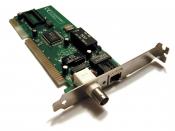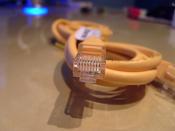Introduction
In 1973, at Xerox Corporation's Palo Alto Research Centre (more commonly known as PARC), researcher Bob Metcalfe designed and tested the first Ethernet network . While working on a way to link Xerox's "Alto" computer to a printer, Metcalfe developed the physical method of cabling that connected devices on the Ethernet as well as the standards that governed communication on the cable. The original Ethernet described communication over a single cable shared by all devices on the network. Once a device attached to this cable, it had the ability to communicate with any other attached device.
Ethernet is a local area technology, with networks traditionally operating within a single building, connecting devices in close proximity. At most, Ethernet devices could have only a few hundred meters of cable between them, making it impractical to connect geographically dispersed locations
As computerized implementations have grown and become increasingly more common in our environment, there has also been a growing need for cables of varying kinds, to tie all these units together and ensure communication between them.
These cables, when they grow into a multitude, are not only unsightly but also hazardous.
Bluetooth was developed by a group of electronics manufacturers that allows any sort of electronic equipment -- from computers and cell phones to keyboards and headphones -- to make its own connections, without wires (Fig1), cables or any direct action from a user. It uses short-range radio links to replace cables between computers and their connected units. Many companies have been mulling over this idea, but it was Ericsson Mobile Communication that finally (in 1994) started the project that was named Bluetooth.
To be Bluetooth certified, a device must pass interoperability testing by the Bluetooth Special Interest Group (SIG), thus assuring that products meeting the specification will be able to...


